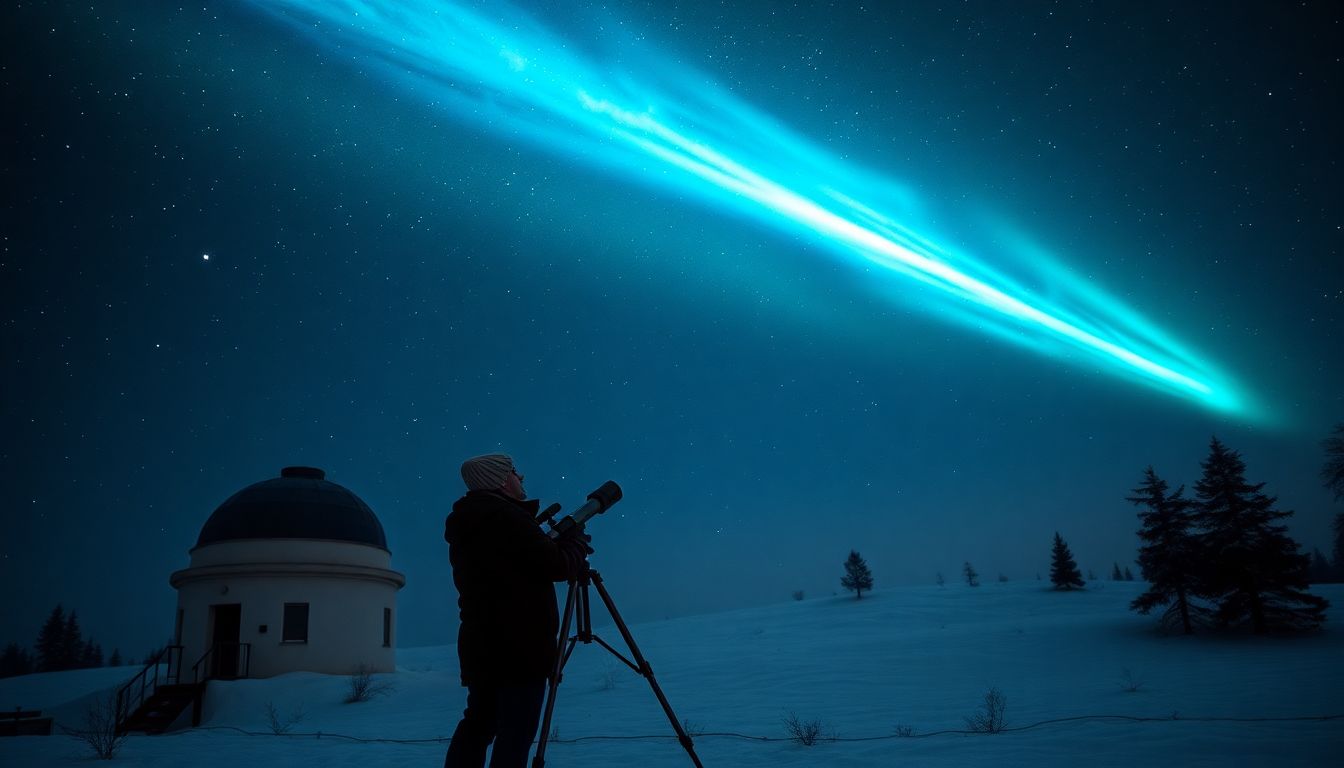
What Makes the 2025 Night Sky Comet So Special
Introduction
Comets always captivate skywatchers and scientists alike. These icy visitors from space tell us much about our solar system and its history. The 2025 comet is causing a buzz around the world. It’s rare to see a comet pass so close and bright. People are eager to watch this event unfold, knowing it might never happen again in our lifetime. What makes this comet stand out? How can you see it? Keep reading to find out why it’s a once-in-a-lifetime celestial display.
The Science Behind the 2025 Night Sky Comet
Composition and Origin of the Comet
Comets are made of three main parts: ice, dust, and organic compounds. The icy core, called the nucleus, is often just a few miles across. As the comet approaches the Sun, heat causes the ice to turn into gas, creating a glowing tail. This tail can stretch millions of miles into space. The 2025 comet likely came from far beyond our solar system. It probably originated in the Oort Cloud, a distant spherical layer of icy objects surrounding our Sun. Recent telescopic studies suggest this comet is pristine, meaning it’s never been close enough to the Sun to lose much of its ice or dust.
Unique Orbital Path and Visibility Window
This comet doesn’t follow the usual orbit. Instead, it zips in from the outer edges of the solar system, giving us a stunning show. It is expected to pass closer to Earth than many past comets, making it exceptionally bright. The best viewing time will be from late February to early April 2025, with peak brightness around March. Compared to famous comets like Hale-Bopp or NEOWISE, this one’s approach is more direct, promising a spectacular sight for skywatchers.
Brightness and Comet Tail Features
Predictions show the comet reaching a magnitude that even beginners can see with just their eyes. It could shine as bright as the full Moon under perfect conditions. Its tail might extend over 50 million miles, a breathtaking sight in the night sky. The tail could display hues of blue and green, caused by gases like cyanogen and diatomic carbon. More size, fresh ice, and the comet’s makeup all add to its brightness and stunning tail features.
Why the 2025 Comet Is a Rare Celestial Event
Unprecedented Trajectory and Approach
This comet’s path is unlike typical visitors. Its close approach to Earth is a historic event, happening at a distance where the comet will look much larger and brighter. Not many comets come so close, especially with such clarity and brightness. This makes the 2025 comet stand out as a unique spectacle for both scientists and stargazers.
Scientific Opportunities and Discoveries
Scientists are eager because this comet offers a peek into the early solar system. Studying its pristine material could unlock secrets about how planets and life began. Space agencies consider this a prime chance to collect data on comet composition and structure. Data gathered might also help improve our planetary defense system by understanding how comets impact Earth.
Cultural and Popular Impact
Expect a surge of media coverage and social media chatter once the comet becomes visible. Amateur astronomers will flock outdoors to catch a glimpse. Many observatories plan public viewing nights and festivals around this event. It’s more than just a bright light; it’s a worldwide cultural phenomenon inspiring curiosity and wonder.
How to Observe the 2025 Comet Safely and Effectively
Best Locations and Timing
Look for clear, dark skies far from city lights. The best viewing months are February and March, after sunset, when the comet rises higher. Aim to observe during moonless nights for the clearest view. Early mornings and late evenings are ideal to catch the comet at its brightest.
Equipment and Observation Tips
A good pair of binoculars can reveal more details of the comet’s tail. For sharper images, use a small telescope or camera with a telephoto lens. If you’re new, start by finding constellations to locate the comet easily. Weather conditions can wash out the view, so check the forecast before heading out.
Enhancing the Experience
Join local astronomy clubs for group viewing events. Use mobile apps designed for skywatching to track the comet’s position. Reading online guides or watching live streams can enhance your experience. Participating in educational programs can make the event even more memorable and meaningful.
The Future of Comet Observation and Scientific Research
Upcoming Missions Focused on Comets
Future missions like ESA’s Comet Interceptor aim to visit pristine comets similar to the 2025 visitor. These projects could reveal new insights about comet origins and the early solar system. They may even bring back samples for lab analysis on Earth.
Advances in Observation Technology
New telescopes and satellite tools are making comet hunting easier. Citizen science initiatives allow amateurs to contribute data, helping scientists track faint or distant comets. These advances mean more discoveries and better understanding of these icy wanderers.
Preparing for Next Similar Events
Stay informed by following astronomy news, apps, and observatory websites. Early detection systems will alert you when new comets are approaching. Every new event teaches us more and helps us prepare for future celestial shows.
Conclusion
The 2025 night sky comet is more than just a bright light. It’s a rare chance for science and the public to learn about our cosmic origins. Its approach offers a spectacular view and exciting research opportunities. Watching it is an experience everyone can enjoy—whether through a telescope or just the naked eye. Make sure to stay updated and plan your viewing nights. This celestial visitor promises a breathtaking show and a chance to witness history in the making. Prepare to look up, and don’t miss this extraordinary event.

